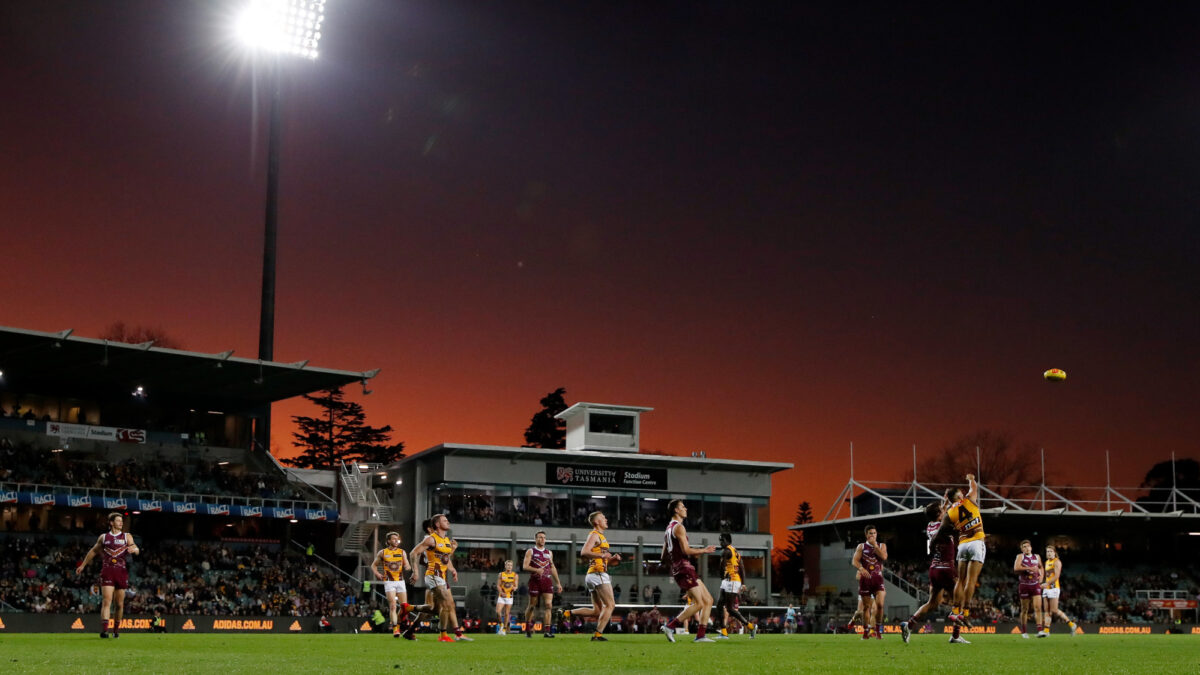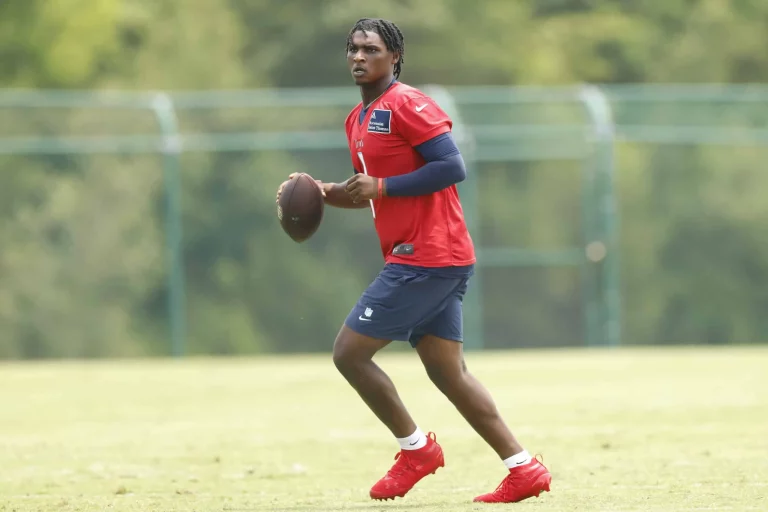It’s a moment etched into the soul of Tasmanian footy – the day a proud football state stood tall and proved, without question, that it belonged in the big time.
On a crisp winter afternoon at North Hobart Oval on June 24, 1990, Tasmania pulled off one of the most remarkable upsets in Australian rules football history, toppling the might of Victoria by 33 points in a State of Origin classic that has become the stuff of legend.
The final scoreboard read Tasmania 20.14 (134) to Victoria 14.17 (101), but the story that unfolded on the ground was bigger than any numbers.
This wasn’t just about goals and behinds – it was about pride, identity, and long-overdue recognition. Tasmania had always produced football talent in droves, but had rarely been given a chance to shine on the national stage as a team. That changed in front of more than 18,000 roaring fans packed into the grandstands and terraces of North Hobart, where the Apple Isle gave the Big V a good old-fashioned footballing lesson.
The build-up was predictable – Victoria arrived with all the swagger you’d expect, armed with a side featuring household AFL names like Paul Couch, Chris Langford, and Barry Mitchell.
Few gave Tasmania a chance. But inside the Tassie camp, belief burned. They weren’t just there to make up the numbers: they were there to win.
The Tasmanian side, coached by Robert Shaw and captained by the no-nonsense Mark McQueen, came out breathing fire. From the first bounce under the afternoon sun, they hunted the ball like their lives depended on it. Every contest was fierce. Every tackle stuck. And when they had the footy, they played with a boldness that had the crowd on its feet.
Up forward, the scoreboard was ticking over thanks to a spread of contributors who stepped up in the big moments. Colin Alexander, who played with a flair and confidence well beyond his years, led the goalkicking charge with four majors. Shane Fell, strong and composed, chimed in with three of his own, while Paul Hudson – son of Tasmanian royalty Peter – also slotted three with his usual class and sharp footy brain. The attack wasn’t just potent – it was selfless, unrelenting, and razor-sharp.
In the middle, Darrin Pritchard put on a masterclass. The Hawthorn midfielder was everywhere — linking up plays, hitting targets, and driving the team forward with his elite endurance and clean skills. He deservedly took home the Lefroy Medal as Tasmania’s best afield, and his performance that afternoon remains one of the finest ever seen in the maroon map jumper. The Victorian midfield simply couldn’t match his work rate or intensity.
Defensively, Tasmania held firm under pressure. The backline stood up time and again, repelling surges and turning defence into attack. McQueen’s leadership down back was vital, setting the tone physically and emotionally. Every time Victoria looked like launching a comeback, the Tasmanian defence held fast – with guts, grit, and good old-fashioned footy smarts.
By the time the final siren rang out into the late afternoon air, the crowd had erupted into pure joy. Fans jumped the fences, the players embraced like brothers, and a whole state beamed with pride. It wasn’t just a win; it was vindication. A declaration. A roar from the south that Tasmania belonged on the big stage – not just as a nursery for AFL talent, but as a football force in its own right.
The significance of that afternoon cannot be overstated. For years, Tasmania had watched from the sidelines as the AFL expanded and evolved, while the island was left in the shadows. But on that day in 1990, Tasmania took the spotlight and owned it.
They didn’t just beat Victoria – they outplayed, outworked, and outwilled them.
That game lit a fire that still burns today. It became a rallying cry for future generations, a reference point for every kid who ever dreamed of wearing the map jumper, and a powerful argument in the long fight for a Tasmanian AFL team. It was proof that, given the opportunity, Tasmania doesn’t just compete – it conquers.
Now, with Tasmania finally set to enter the AFL in its own right, the echoes of that famous afternoon still ring out. The chants from the terraces, the goals sailing through the uprights, the underdogs standing tall — it all lives on in footy folklore.
June 24, 1990, wasn’t just a football match. It was a turning point. A celebration. A reminder to the football world that Tasmania has always belonged — and on that glorious afternoon at North Hobart, they didn’t just remind us… they made sure we’d never forget.






